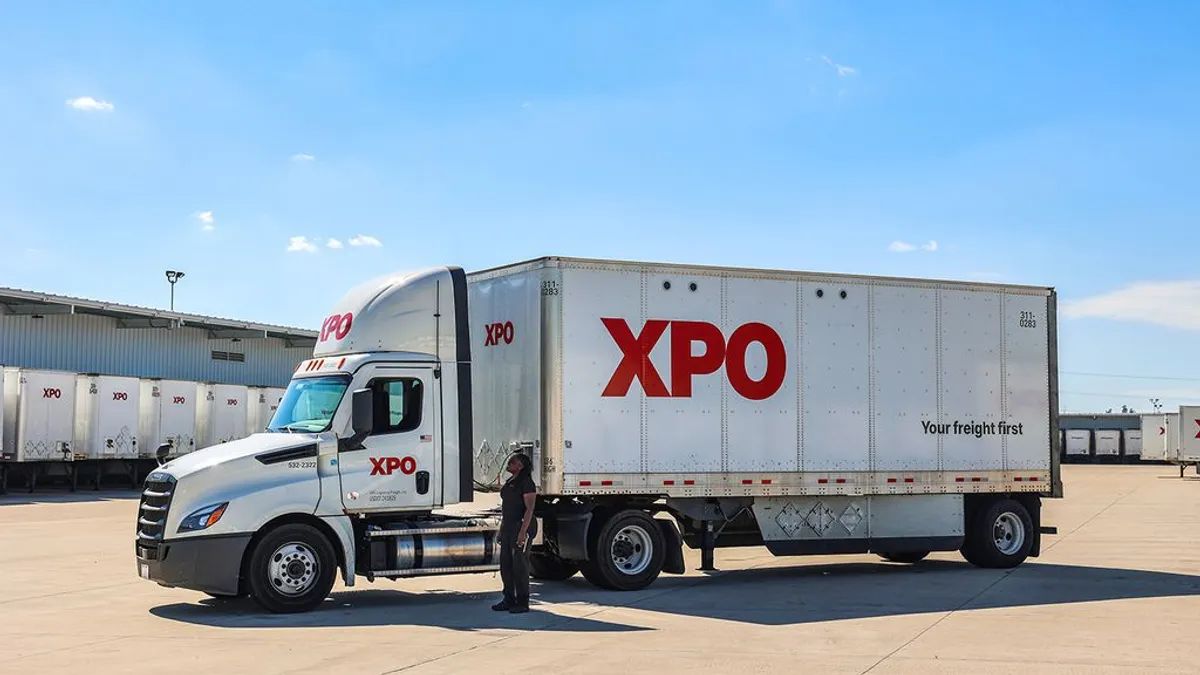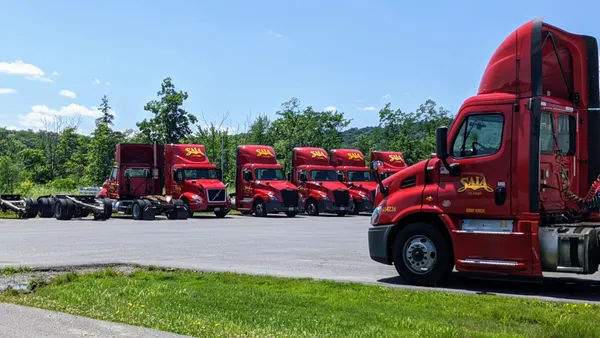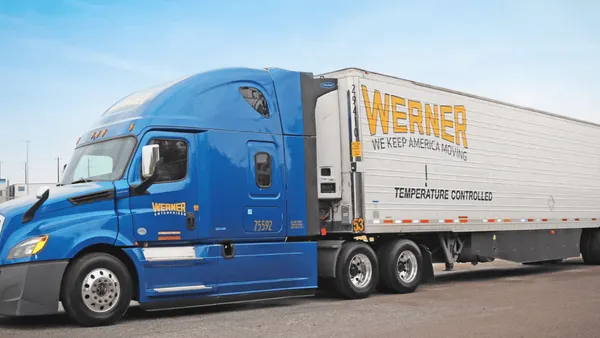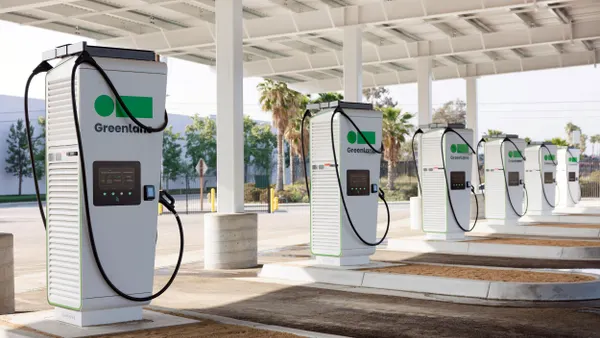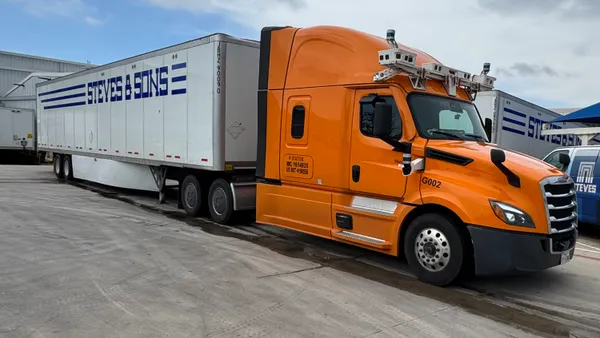Dive Brief:
- More than $7 million in federal grants will help build medium- and heavy-duty EV charging and hydrogen fueling corridors across a combined 23 states, the Energy and Transportation Departments announced Thursday.
- The seven projects receiving the money span the country and seek to lower emissions in drayage, regional haul and long-haul. One will develop an action plan, supported by community, state and industry, to improve air quality in underserved communities most affected by truck emissions in the greater Salt Lake City area.
- The grants are investments in President Joe Biden’s goal of building out a national network of 500,000 EV chargers — manufactured in the U.S. — by 2030.
Projects funded through the Biden Administration Energy and Transportation departments
| Recipient | City | Grant amount | Purpose |
|---|---|---|---|
| CALSTART | Pasadena, California | $1.25M | East Coast Commercial ZEV Corridor |
| Cummins, Inc. | Columbus, Indiana | $1.25M | MD-HD ZEV Infrastructure Planning with focus on I-80 Midwest (IN-IL-OH) corridor |
| GTI Energy | Des Planes, Illinois | $1.25M | Houston to Los Angeles (H2LA) – I-10 Hydrogen Corridor Project |
| Los Angeles Cleantech Incubator | Los Angeles, California | $688.9K | First to Last Mile: Creating an Integrated Goods Movement Charging Network around the I-710 Corridor |
| National Grid | North Waltham, Massachusetts | $1M | Northeast Electric Highways |
| Rocky Mountain Institute | Boulder, Colorado | $750K | San Francisco and Bay Area Regional Medium- and Heavy-Duty Electrification Roadmap. |
| Utah State University | Logan, Utah | $1.2M | Wasatch Front Multi-Modal Corridor Electrification Plan |
Source: Department of Energy
Dive Insight:
The geographic spread of the funding recipients was no accident.
Decarbonizing trucks that move U.S. goods, and building more charging stations to get those trucks from coast to coast, are requirements for a clean transportation sector, Energy Secretary Jennifer Granholm said in a statement.
“President Biden’s historic clean energy laws are making it possible for us to get more EVs on the road by expanding charging infrastructure into underserved communities, while reducing range and cost anxiety among drivers who want to go electric,” Granholm said.
Fleets are increasingly adopting EV trucks, which is expected to continue as one of the industry’s top technology trends this year and beyond.
U.S. Foods deployed the first five of its expected 30 electric semi-trucks at its La Mirada, California, distribution center, and the company expects to receive and roll out the rest this year. PGT Trucking purchased its first Nikola Tre battery-electric vehicle (BEV) semi-truck and plans to lease 100 more this year.
The Biden administration has adopted a goal of shifting all new medium- and heavy-duty vehicle sales to zero-emission vehicles by 2040.
Alongside the funding announcement, the White House touted a $400 million commitment by zero-emission trucking solutions provider Forum Mobility to install more than 1,000 DC fast-chargers for heavy-duty EV trucks hauling cargo at the San Pedro and Oakland ports over the next decade.
The community charging depots will create over 600 union jobs in disadvantaged communities while reducing harmful emissions at the California ports and on nearby freight corridors, according to a White House fact sheet.







